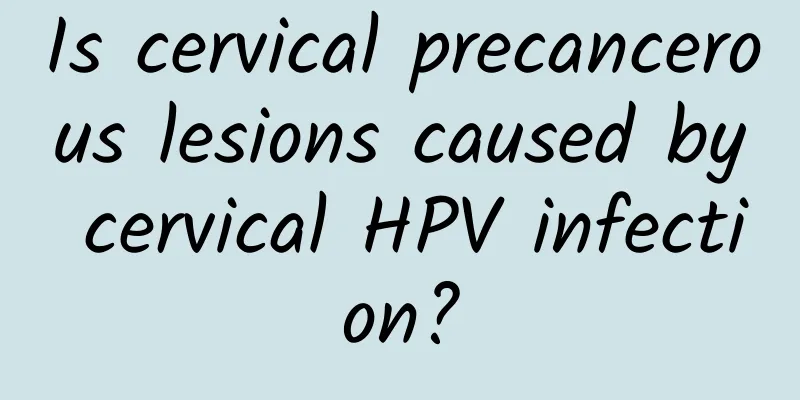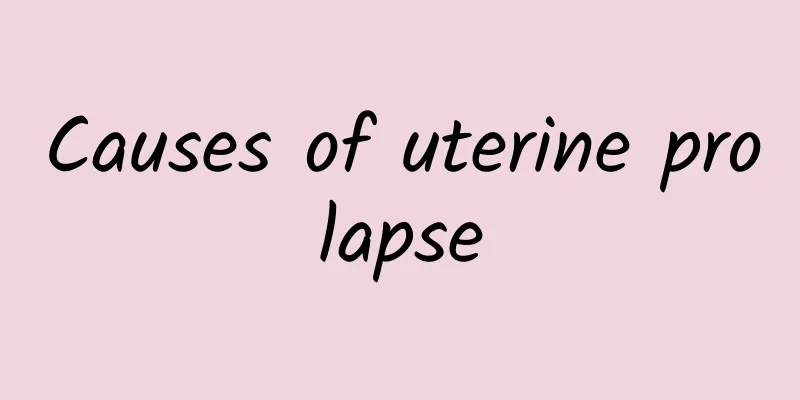Is cervical precancerous lesions caused by cervical HPV infection?

|
With antibiotics, bacteria can be killed, but there is still a lack of effective drugs to treat viral infections. Human papillomavirus (HPV) is one of the most common viruses in nature. How does it infect women's cervix, how does it cause cervical lesions, and even cervical cancer? How to prevent it? Once infected with HPV, how to deal with it? What is HPV? Human papillomavirus (HPV) is the most common viral infection of the reproductive tract. Most sexually active women and men will be infected at some point in their lives, and some may be infected repeatedly. The peak time of infection for women and men is soon after becoming sexually active. HPV is sexually transmitted, but it is not required for it to be transmitted. Skin-to-skin genital contact is a recognized mode of transmission. There are many types of human papillomavirus, and many do not cause problems. HPV infection usually clears up without any intervention within a few months after it is acquired, and about 90% clear up within 2 years. A small percentage of HPV infections can persist and develop into cervical cancer. Cervical cancer is by far the most common HPV-related disease. Almost all cases of cervical cancer can be attributed to HPV infection. Infection with certain HPV types can also cause cancers of the anus, vulva, vagina, penis, and oropharynx and are preventable using primary prevention strategies similar to those for cervical cancer. Non-cancer-causing HPV types (particularly types 6 and 11) can cause genital warts and respiratory papillomatosis (a disease in which tumors grow in the air passages from the nose and mouth to the lungs). Although these diseases rarely result in death, they can cause significant illness. Genital warts are common, highly contagious, and can affect sex. How HPV infection causes cervical cancer Although most HPV infections clear on their own and most precancerous lesions regress naturally, for all women, HPV infection has the potential to become chronic and precancerous, evolving into invasive cervical cancer. It takes 15 to 20 years for a woman with a normal immune system to develop cervical cancer. Women with weakened immune systems, such as those with untreated HIV infection, take only 5 to 10 years. What is HPV virus HPV is a genus of papillomavirus A belonging to the family Papovaviridae. It is a spherical DNA virus that mainly infects the squamous epithelium of the skin and mucous membranes. At present, there are about 130 known HPV gene types, and different types of HPV virus infection can cause different clinical manifestations. Among them, 40 types can infect the reproductive tract. Most HPV infections are asymptomatic or transient infections (about 80% of women will be infected with HPV in their lifetime, but most of them are transient infections and will not cause cervical lesions, so even if HPV infection is detected, there is no need to panic). Non-carcinogenic infections or low-risk HPV (such as HPV6) only cause sexually transmitted diseases such as genital warts. However, persistent carcinogenic infections (such as HPV16, 18) are the main causes of cervical precancerous lesions and cervical cancer (if it is a transient infection with a high-risk virus, don't worry, the key is that it is a persistent infection, which requires close observation). At the same time, this type of virus can also cause anal cancer, vaginal cancer, oropharyngeal cancer, vulvar cancer, penile cancer (male compatriots, please pay attention), oral cancer, laryngeal cancer, etc. Transmission routes of HPV infection in women How is HPV transmitted? The main route of HPV infection is sexual contact (then everyone should know why HPV can also cause anal cancer, oropharyngeal cancer, penile cancer, oral cancer, and laryngeal cancer). But HPV is very tenacious and can still be transmitted through close contact in life. Even condoms cannot block the passage of HPV (regular sexual partners and safe use of condoms will greatly reduce the probability of HPV transmission. Condoms are still safer). Multiple sexual partners, premature sexual activity (before the age of 18), and smoking are other high-risk factors for the occurrence of cervical cancer (healthy living, early to bed and early to rise, exercise, and improving human immunity are the most important). HPV Prevention The key to HPV prevention is to get the vaccine as early as possible (generally women aged 9-26, with no history of sexual activity and HPV infection are preferred). Unfortunately, it has not yet been developed and marketed in mainland China. Studies have shown that vaccines targeting HPV16/18 can prevent most cervical cancers (66.2%), anal cancers (79.4%), oropharyngeal cancers (60.2%), vaginal cancers (55.1%), and many penile cancers (47.9%) and vulvar cancers (48.6%). Currently, the quadrivalent (HPV6, 11, 16, 18) vaccine is commonly used. The US FDA has newly certified a 9-valent vaccine (currently the clinical effect is not clear and is still controversial). In short, the application of HPV vaccines greatly reduces HPV-related cancers. I hope that it will be marketed in China as soon as possible so that the incidence of cervical cancer in China can reach the level of developed countries. The industry is moving towards the 4.0 era, so why can't medical care move forward? |
>>: How can I cure vaginitis? You may want to try this method.
Recommend
Is it a big deal if a woman has sex with a condom 20 days after an abortion?
It is usually not recommended for women to have s...
What should I do if my menstrual flow is heavy after childbirth?
What should I do if my menstrual flow is heavy af...
The dangers of bacterial vaginosis
Correctly understanding the dangers of candidal v...
How to treat abnormal leucorrhea yourself
Abnormal vaginal discharge can be self-treated by...
Get rid of belly fat by fasting? 5 foods to help burn belly fat
I’ve been eating less and exercising more, but wh...
How to diagnose endometriosis
The diagnosis of endometriosis requires endoscopi...
"Iron Legs" went downstairs in shock! 3 tips to relieve muscle soreness
Summer is here and more people are exercising. Ho...
Symptoms of ovarian cysts in women
Ovarian tumors are common tumors of the female re...
What causes endometriosis? Learn about the three main causes
Many female friends probably don't know about...
Can’t give up sweets but afraid of getting fat? Nutritionist: Eat safely at these 3 times and you won’t gain weight!
"Giving up sweets" is nothing more than...
Women should pay attention to specific precautions after abortion
Unexpected pregnancy is very common in life, so a...
Why does cervical laceration occur during artificial abortion?
Artificial abortion is a blind operation that dep...
Introduction to several effective methods for treating candidal vaginitis
For female friends, it is necessary to treat cand...
How to treat cervicitis better?
The treatment effect of cervicitis depends on the...
How many days after medical abortion can you go out? How can you promote recovery after medical abortion?
Many young people may choose medical abortion aft...









